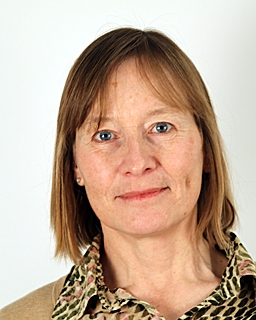
PhD – Matematisk-naturvitenskapelig fakultet, Universitetet i Oslo, 1994
Mag. der Naturwissenschaften – Universität Wien, 1988
Cand. mag. – Matematisk-naturvitenskapelig fakultet, Universitetet i Oslo, 1985
KONTAKT
Mari Espelund kan nås på telefon: +47 99452187 og e-post: mies@aquateam.noSENIORFORSKER, AQUATEAM COWI
Mari Espelund er utdannet biolog med doktorgrad innen molekylærbiologi. Hun begynte å jobbe for Aquateam COWI i februar 2023, og har tidligere hatt stillinger som forskningsleder/forsker i oppstartselskap innen påvisning av patogene mikroorganismer (Genpoint AS, 1999-2007) og utvikling av materialer med antibegroingsegenskaper i marint miljø (Inhibio AS, 2017-2022). Hun også i perioder hatt forskerstillinger (evolusjonsbiologi på alger/protister) ved Universitetet i Oslo. I tillegg har Espelund vært Post-Doc ved Forsvarets forskningsinstitutt (FFI, 2011-2014) hvor hun arbeidet med problemstillinger rundt biologiske trusselstoffer.Espelund har lang erfaring både fra akademisk, anvendt forskning og produktutvikling. Hun har kompetanse innen molekylærbiologi og mikrobiologi, inkludert kultivering av mikroorganismer, metoder for isolering og påvisning av mikroorganismer, kvantifiseringsmetoder og molekylære assays.
Hun har også god erfaring i fra prosjektarbeid med industri og SMEer, og har allsidig erfaring fra arbeid i start-ups.
PUBLIKASJONER
Espelund M, Klaveness, D. (2014). Botulism outbreaks in natural environments – an update. Frontiers in Microbiology, doi: 10.3389/fmicb.2014.00287.Espelund M, Minge MA, Gabrielsen TM, Nederbragt AJ, Shalchian-Tabrizi K, et al. (2012). Genome fragmentation is not confined to the peridinin plastid in dinoflagellates. PLoS ONE 7(6): e38809. doi: 10.1371/journal.pone.0038809.
Gabrielsen TM, Minge MA, Espelund M, Tooming-Klunderud A, Patil V, et al. (2011). Genome evolution of a tertiary dinoflagellate plastid. PLoS ONE 6(4): e19132. doi: 10.1371/journal.pone.0019132.
Star B, Nederbragt AJ, Jentoft S, Grimholt U, Malmstrøm M, Gregers TF, Rounge TB, Paulsen J, Solbakken MH, Sharma A, Wetten AF, Lanzén A, Winer R, Knight J, Vogel JH, Aken B, Andersen Ø, Lagesen K, Tooming-Klunderud A, Edvardsen RB, Kirubakaran GT, Espelund M, Nepal C, Previti C, Karlsen BO et al. (2011). The genome sequence of Atlantic cod reveals a unique immune system. Nature 477, 207Ȉ210, doi: 10.1038/nature10342.
Shalchian-Tabrizi K, Minge MA, Espelund M, Orr R, Ruden T, Jakobsen KS, Cavalier-Smith T (2008). Multigene phylogeny of choanozoa and the origin of animals. PloS One, 3(5): e2098.
d’Auriac MA, Refseth UH, Espelund M, Moi H, Storvold G, Jeansson S (2007). A new automated method for isolation of Chlamydia trachomatis from urine eliminates inhibition and increases robustness for NAAT systems. Journal of Microbiological Methods, 70: 416-423.
Lysen J, Berthelsen HKH, Espelund M, Jeansson S, Mengshoel AT, Refseth UH (2007). Evaluation of a rapid automated assay for the isolation of Mycobacterium tuberculosis DNA directly from clinical samples, using magnetic particles. International Journal of Antimicrobial Agents, 29: S572-S572.
Espelund M, Bekele E, Holst-Jensen A, Jakobsen KS, Nordal I (2000). A molecular genetic analysis of Eragrostis tef (Zucc.) Trotter: non-coding regions of chloroplast DNA, 18S rDNA and the transcription factor VP1. Hereditas, 132: 193-202.
Hollung K, Espelund M, Schou K, Jakobsen KS (1997). Developmental, stress and ABA modulation of mRNA levels for bZip transcription factors and Vp1 in barley embryos and embryo-derived suspension cultures. Plant Molecular Biology, 35: 561-571.
Espelund M, Debedout JA, Outlaw WH, Jakobsen KS (1995). Environmental and hormonal-regulation of barley late-embryogenesis-abundant (lea) messenger-RNAs is via different signal-transduction pathways. Plant Cell and Environment, 18: 943-949.
Stacy RAP, Espelund M, Saeboe-Larssen S, Hollung K, Helliesen E, Jakobsen KS (1995). Evolution of the Group-1 late embryogenesis abundant (lea) genes – analysis of the lea B19 gene family in barley. Plant Molecular Biology, 28: 1039-1054.
Hollung K, Espelund M, Jakobsen KS (1994). Another lea B19 gene (Group1 lea) from barley containing a single 20 amino-acid hydrophilic motif. Plant Molecular Biology, 25: 559-564. Espelund M, Jakobsen KS (1992). Cloning and direct sequencing of plant promoters using primer-adapter mediated PCR on DNA coupled to a magnetic solid-phase. Biotechniques, 13: 74-81.
Espelund M, Saeboe-Larssen S, Hughes DW, Galau GA, Larsen F, Jakobsen KS (1992). Late embryogenesis-abundant genes encoding proteins with different numbers of hydrophilic repeats are regulated differentially by abscisic-acid and osmotic-stress. Plant Journal, 2:241-252.
Espelund M, Stacy RAP, Jakobsen KS (1990). A simple method for generating single-stranded-DNA probes labeled to high activities. Nucleic Acids Research, 18:6157-6158.